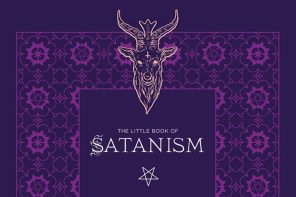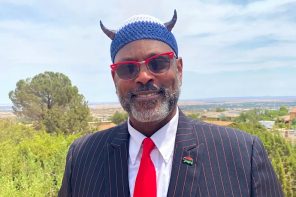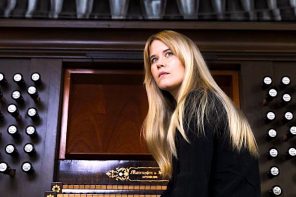By now, many in the Boston area and beyond are familiar with the controversy surrounding the “reenactment” of a “black mass” that was to take place at Harvard University earlier this week.
There can be no doubt that members of my own religious community, the Roman Catholic Church, were instrumental in the dissolution of the event: public rosaries, Eucharistic processions, and planned holy hours testify to the fact that we were disturbed by what we perceived to be an affront to the Eucharist.
Unfortunately, in retrospect, our actions were premature, reflecting an unwitting participation in both a discourse of fear and insecurity, and a dishonest disavowal of the actual power that we hold in American society as a religious group.
One of the most beautiful aspects of the Roman Catholic tradition is, following Pope Francis, a culture of encounter, in which both Christians and non-Christians meet one another in the doing of good. But with respect to the black mass we have rejected that spirit and capitulated to a culture of abjection and hysteria. We heard the words “Satanist” and “black mass,” and quickly turned our eyes, ears, and hearts away from these people, assuring ourselves that we knew exactly what was going on, and that we wanted nothing to do with them. But what did we actually “know”?
Much of the discussion in the Catholic world surrounding the “black mass” centered on the symbolic nature of this ritual; namely, that it’s a mockery of the Catholic liturgy (or perhaps even theanti-Catholic liturgy par excellence), and that any sort of interaction with it could place one—even an innocent spectator— “close to the destructive works of evil,” as the Diocese warned. Or, stated perhaps less obliquely, it could leave one open to demonic possession.
Now, there can be no doubt that, when we reflect on certain realities, particularly horrendous ones like slavery in the US and the Holocaust in Europe, certain aspects of that reality become symbolic representations of these atrocities. (Thus, for example, the swastika becomes a symbol of anti-Semitism and white supremacy, no matter where you are in the world today). Unlike these symbols that are based in reality, however, a thoughtful investigation into the “black mass” would have revealed that this is actually a symbol in search of a reality.
Boston University professor David Frankfurter, in his award-winning 2006 book Evil Incarnate: Rumors of Demonic Conspiracy and Satanic Abuse in History, argues that, when we apply the most rigorous standard of historical scholarship to allegations of Satanic evil conspiracies and rituals like that of the “black mass,” we find that “no evidence has ever been found to verify the atrocities as historical events” (212).
Moreover, Frankfurter writes that when we critically examine perceptions of these “evil rites” in our modern day, we find that they’re the products of an age-old attribution of “libertine savagery” to groups that we perceive as the “Other,” combined with a comparatively recent fascination with seeing these Others as institutionally organized (114-117).
In other words, despite the fact that published hysteria continues to make its way into established media (like David Filipov’s recent “article” in the Boston Globe), the Satanic “black mass,” with all of its evil conjurings and alleged Eucharistic desecrations, is a modern fabrication from a Christian mind that for centuries has been found guilty of falsely accusing others of ritualistic evil conspiracy (think of the witch-hunts throughout early modern Europe and America).
So, for example, when the Satanic Temple’s Lucien Greaves points out that the black mass to be reenacted was one that came from a late-nineteenth century French novel (the novel which, Frankfurter writes, was the literary basis for all other imaginations about the “black mass”), we should recognize what the black mass is actually a symbol of: Christian hysteria based in fear that ostracizes the Other from our midst—too often fatally. The reenactment of the “black mass” could have been educational for Christians, an opportunity to examine our own ostracizing imaginations. As Christians living in the 21st century, we should have learned from the deadly actions of our forebears and should have chosen not to resuscitate the ghosts of the witch-hunters.
In the future, to do this properly would mean that Christians need to confront the other aspect of what our actions yesterday represented: the improper use of power in which privilege was exercised to the detriment of other religious voices. It would require us to face the reality that, in the United States today, Catholics are not oppressed.
One aspect of this privilege should be obvious from the fact that, in protesting the event, we were able to march the Blessed Sacrament down the streets of Cambridge in full public view. Another is the ability to dismiss non-Christian religions without proper engagement. Many of my Christian friends, for example, believed that the Satanic Temple somehow worshipped “Satan,” either as an actual being or as a collection of the forces of evil. Had they taken the time to visit the Temple’s website, they would have found that these Satanists don’t worship anything: they’re atheists.
Had they taken the time, they would have discovered that what these people do believe is actually quite constructive for ethical projects. To quote just a few of these beliefs, these Satanists believe that, “One should strive to act with compassion and empathy towards all creatures,” and that “the spirit of compassion, wisdom, and justice should always prevail.”
Had they taken the time to listen to a lecture from the Temple’s spokesperson, they would have found that these Satanists, for example, collect funds for women who find themselves in crisis pregnancies and cannot afford abortions—something that many liberal Catholics might actually find to be compassionate.
And finally, had they taken the time, they would have discovered that the reason they call themselves Satanists is, as Joe Laycock noted here on RD, because they actively work against a society that’s saturated with Christian privilege; they challenge the logic of a system that creates outgroups and ostracizes others. This is, once again, something that we Catholics have, sadly, participated in, and continue to participate in, through continued manifestations of sexism and heterosexism in our formal doctrines and church practices.
I therefore viewed the day after the scheduled black mass as a day of mourning—mourning that, instead of seeking out the Other, we acted on the bases of prejudices and fears; mourning that, instead of looking for points of dialogue, we performed only denunciations; and mourning that my religious community participated in a pattern of exclusion and ostracization for which we, in many real ways, are still performing penance.




